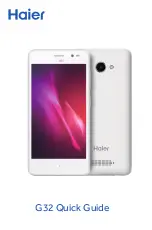
White Paper
T630/T628
33
October 2003
Mobile Internet
The mobile Internet offers much more than mobile
access to the Internet. It opens up a whole new
range of situation-based services that give the user
access to personalized communications, informa-
tion and entertainment, anytime, anywhere.
Data connections
In order to browse via WAP or use an Internet con-
nection, the user must have a data communication
connection configured in the phone. This connec-
tion contains specific settings and parameters to
connect to an appropriate server. Several data con-
nections can be saved in the T630/T628. To make it
easier for the user, data connections can be pro-
vided by the operator via OTA provisioning.
Advantages of data connections include:
•
Once the data connections are defined and
named, the user does not have to enter the set-
tings for the connection again.
•
Data connections can be re-used at any time.
•
Individual data settings for working with WAP, e-
mail or the Internet can be stored and activated
as needed.
•
Data connections can be used for both GSM
Data and GPRS connection settings.
•
Bearer type for WAP and corresponding bearer-
specific parameters may be selected.
•
Data connections contain all the necessary set-
tings for the Internet access point, including
modem pool phone number or IP address, user
ID and password.
Mobile positioning
The geographic location of mobile subscribers can
be used to provide them with related information
and a variety of services. Sony Ericsson’s Mobile
Positioning System (MPS) gives operators a fast
and cost-effective way to establish and roll out
location-based services.
For users of the T630/T628, the integration of
mobile positioning with WAP services means that a
complete range of service and information tools is
available.
More information regarding possibilities with and
technologies for mobile positioning is available at
http://www.SonyEricsson.com/mps.
General Packet Radio Services
The introduction of GPRS (General Packet Radio
Services) is one of the key steps in the evolution of
today’s GSM networks for enhancing the capabili-
ties of data communication. Data traffic is increas-
ing enormously (over both wired and wireless
networks), with the growth in demand for Internet
access and services paralleling that for mobile
communications. Users want access to the Internet
while they are away from their offices and homes,
and surveys have found that the vast majority of
business professionals want the ability to send and
receive e-mail, browse the WAP and transmit text
Содержание T628
Страница 1: ...October 2003 T630 T628 ...
















































